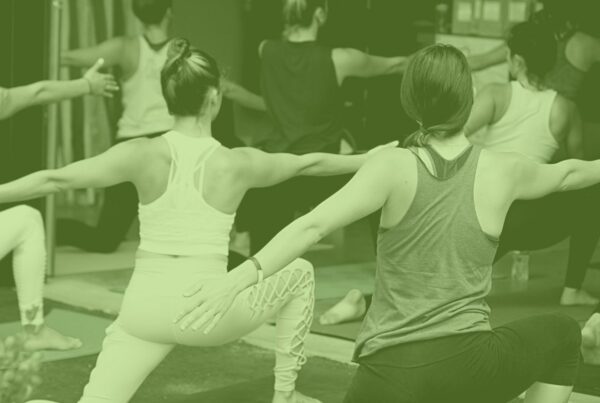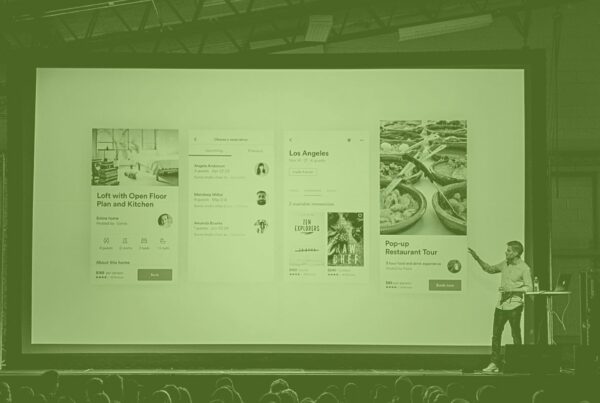The industry is shifting faster than ever before. With the threat of COVID-19 planners are facing mandates and calls to cancel events globally. This was a blow to the industry we never saw coming. Event profs around the world are facing the challenge of turning their in-person event into a virtual event and fast. While our industry is no stranger to challenges, this is one of the biggest we have faced in a long time. But our industry is strong and we will press on!

If you are facing the need to turn your events virtual you are in good company, IMB Think conference, TED talks, and many other prominent events have gone virtual and so can you. Are you ready to make the jump? Unsure where to start? After all, how do you switch your in-person event to a virtual event?
We understand your concerns. This can feel extremely overwhelming and we want to help.. Here at Endless, we frequently produce virtual events managing all of our clients’ technology (from cameras to software, when I say ALL). In fact, see how we handle virtual events check out our case study with Morton Salt here. We created this guide to help understand how to turn your in-person events into virtual events. Below you will find out how to shift your event to a virtual one, your options in creating it, the steps you should take, and the pitfalls you should avoid. Let’s dive in below!
Moving to a Virtual Event – How do I get it online?
There are many ways to make this happen. Your virtual event producer will walk you through the best way for your event. Moving your event online will require several moving parts. To start, you will need to have a live-streaming plan, and platform to hold your event on. Furthermore, you will need to decide how attendees will gain access to the virtual event. Will you have paid entrance? Will attendees be provided with a log-in code? Is it open to the public, private or a mix of both? To properly answer those questions you will need to do some basic virtual event planning before you can implement the technical aspects. This will allow you to make decisions based on the needs of your event and cut out what you don’t need.
How Do I Plan My Virtual Event?
Planning a virtual event has some unique characteristics and challenges but it is not all that different from planning an in-person event at its core. Below you will find the steps necessary to plan a successful virtual event.
Visualize Your Virtual Event
So you need to pivot to a virtual event and fast! What needs to happen to make this transition a success? The first steps are to look at your event and visualize what your ideal online event would look like. Do you want attendees to be able to walk through your event virtually? Is it important for attendees to be able to communicate 1:1? How will attendees ask questions during presentations? What will networking look like? Will you need demos of products? And what will you do to keep your sponsors happy? Having some ideas on what you want, and what you don’t want will make it easier for your virtual event producer to offer you the best solutions for the experience you desire.
Consider Your Attendees and What they Need
Your event is now virtual. Obviously things will be different, you’re not going to need to have lunches and cocktail hours. But you do need to provide what attendees were going to your in-person event for, delivered in a virtual format. Make sure your virtual event covers everything they were coming to experience such as continuing education classes, the speakers they were looking forward to, networking opportunities, and product demos. Attendees will understand there are changes and most will be willing to adapt. However, adapting does not mean you should cut any value, they will expect to still receive the same value they would as if they were attending your event in person.
Consider Your Sponsors and Exhibitors
Exhibitors
This is going to look a lot different than your traditional trade show hall. You need to think about what attendees will and would not want to do while attending virtually. Will your attendees actually want to walk through a virtual exhibit hall? I think it’s rather unlikely. However, you don’t want it to be something where people show up with just a bunch of logos on a page. Or even worse a virtual salesperson pops-up unannounced in their browser. Really- don’t do this, people don’t want to talk to salespeople anymore, they want to talk when they are ready to buy.
Instead, product placements might make more sense, for example, after the general session you could have an exhibitor do a 5-minute demo showing off their product then give attendees an opportunity to go into a meeting room if they want to learn more. You could also allow attendees to click on a link to schedule a 1:1 meeting with the exhibitor if they are interested.
Virtual Sponsors
Sponsorship is another portion of the event that will look different. In-person events often have sponsors signage posted throughout the event, hosting cocktail parties or other activations. When you have a virtual event some of the same concepts can still apply and others will need to be adapted.
Look into having sponsors host a virtual room, give sponsors a few minutes to talk to the attendees and just like an exhibitor offers a meeting link or virtual room for anyone interested to connect further. Instead of banners or signage give sponsors virtual graphics that can go up before a speaker or session goes live. Or you could break from the speaker for a small “commercial break” we see this often in the podcasting world if you do anything like this be sure to keep it short and succinct to prevent any drop-off in attendance.
 Virtual Event Planning Pitfalls
Virtual Event Planning Pitfalls
Though events are never one size fits all there are common pitfalls you can make when planning a virtual event. Like an in-person event keep your target audience in mind, what are your attendees’ personas? Some conferences may have less tech-savvy crowds which could feel overwhelmed by just the thought of going virtual, if this is the case it is best to keep the virtual event as simple as you can. More tech-savvy crowds might appreciate bleeding tech and implementing VR or AR into the experience.
As a best practice, it is best to avoid very complex platforms and limit things people need to download for the best user experience.
Technical Aspects of a Virtual Event
You now have a good idea of what you want your event to look like, and how you want your attendees to experience it. You have visualized how to keep your exhibitors and sponsors happy. And you know the common pitfalls to avoid. It’s time to start executing. The first step in execution is to consider the formats, live streaming platforms and options available to you for hosting your virtual event.
Before we get into them, we highly suggest hiring a technical producer to make your event go smoothly. They will know the ins and outs of all formats and be able to provide you a seamless experience. There are lots of moving parts and you don’t want to get your virtual event wrong.
 Common Options to Capture Virtual Events
Common Options to Capture Virtual Events
There are two common options for capturing virtual events. Ranging from simple to complex. Below we break down the types as well as pros and cons of each.
Webinar/Live Stream Type Format
This is probably the format you are most familiar with. Many people have attended online webinars or live streams. They are very common and easy to create. The downside of webinars and live streams is that they do not allow for much audience engagement beyond polling, or chat outside of when the webinar or live stream is live. It more or less allows attendees to show up and watch a presentation with very little interaction. You want to look for a way to create long term engagement and often this is not the best way. A single platform is more like having just a venue without all the unique details you bring to your events, it is more or less an empty space to hold the event. To truly engage your audience you can do more! Enter virtual conference formats!
Virtual Conference Format
A conference format allows for a more complex event. Conference style formats allow for rooms for the general sessions and smaller rooms for each of the breakout sessions. There are options to allow for more dialogue and capabilities to have 1:1 sessions, coaching, and networking.
Depending on your setup you can also allow people to see each other and interact, this is a great option when more dialogue is needed. It will also make the attendees feel more involved like they are actually there vs staring at a screen with little interaction. These virtual events are more complex and require more technical prowess which is why it is recommended to hire a technical producer. Similar to an in-person event, your technical producer will be behind the scenes making sure all the working parts work together for a seamless experience.
To Go Live or Not to Go Live?
With virtual events how you present your content has greater options than in-person events. Virtual events can be pre-recorded, live, or a mix of the two. Depending on your needs one way may better suit you than the other.
Pre-Recorded Content
As technical producers, this is our least favorite option. Pre-recorded content can allow for less stress at the “live” virtual event, and can limit technical malfunctions but it is less engaging. This type of content cannot adapt to the tone of the audience, the excitement (or lack thereof) in the chats, or answer questions that come in – in real-time. In sessions that are pre-recorded they often fail to create the excitement that a live event gives you, it feels more like watching a YouTube video than being part of something. Attendees will feel less invested because it is not live, they can leave and come back and no one will really know. For this reason, we recommend this only as a last resort.
Live Virtual Events
Virtual events where speakers are live and have interaction can offer a lot more for the attendee and are an overall more engaging experience. Speakers at these virtual events can answer attendees’ questions in real-time, shift conversations as needed and respond to polls from the audience in real-time. This is a much more interactive experience. To pull this off correctly you will need a technical production team that is capable of switching between speakers, balancing audio, video and so much more.
Make it Hybrid
Fully live events can be stressful, but like we said pre-recorded options are far less engaging. Creating a hybrid content for your virtual event can be a good option too. In this case, you can have a mixture of some live presentations and a live MC guiding attendees through the event. Some of your content will be pre-recorded similar to a TV studio you will have pre-recorded talks. During those pre-recorded portions your MC can do the Q&A and give shout outs to those tuning in.
In all of these scenarios, your technical producer would work with presenters to make sure they have the right mics, lights, and video set up. They would also ensure the broadcast ran smoothly and everything was taking place when it needed to.
 Producing Great Content for Virtual Events
Producing Great Content for Virtual Events
A great event requires great content. This is even more important when it comes to a virtual event. Think about it, we already know attention spans are low. In fact, humans have a shorter attention span than a goldfish. Chances are your attendees are watching from the comfort of their home, that means you are competing with a lot of distractions that are not at in-person events. Netflix anyone?
Because attention spans are shorter and distractions are higher you must plan for shorter and more engaging content. Virtual attendees need love too. This can take many shapes and forms. Perhaps instead of having full-day sessions, you extend the conference over the course of a week with 2 hours of content each day. You can also make your content to encourage activity by having speakers do live-polling, Q&A, and quizzing. Another way to make the live-stream interactive is to allow for giveaways, this could be a presenter doing a drawing, quizzing or pop-up over videos to enter to win.
With virtual events, it is critical to find ways to make attendees excited and feel like they are really part of your event not just staring at a screen.
How is virtual event content filmed?
Ideally for virtual events content is filmed in one location with all speakers and presenters. This can be done both live and with pre-recorded content. A studio recording allows for a consistent look and high-quality production level. All filming would be done inside a studio with professional lighting, sound, and video quality. It would then be broadcasted out to a live-stream. Filming in a studio allows for complete control of the elements. It also allows for some of the presenters and MCs to interact making it feel just a little more like an in-person event.
However, with the increasing threat of coronavirus on travel, and in-person gatherings strongly suggested to be 10 people or less and many companies going remote, for now, the best option would be to have everyone film from their own remote spaces.
Allowing every presenter to film everything from home allows for flexibility and safety in this unpredictable time. In this situation, your technical producer would aid in making this as seamless as possible being your technical arm and training the presenters in how to make their best virtual presentation possible. They would provide the mics, tips for lighting, and the same audio and visual checks you would have in the studio. The presenter’s broadcast would be fed through an interface and then presented through your live-streaming platform.
 Replacing in Person-Networking at Your Virtual Event
Replacing in Person-Networking at Your Virtual Event
There are many ways to give attendees the opportunity to network with each other even when they can’t meet in person. It is important to get this part of your event right to make sure the virtual experience really does give the same value an in-person event would. After all, We know event-goers LOVE to network and enjoy connecting with other attendees. There are several ways to go about this you could allow attendees to set up 1:1 meeting rooms with each other, but this creates a lot of work on the attendees’ behalf to find connections. It’s hard enough to connect in real life, let alone find connections online through a virtual event. The better option would be to use technology and algorithms to help your attendees network and find like-minded people connect and bring them together. This will allow for more powerful connections and fantastic virtual networking.
 Keeping Virtual Events Secure
Keeping Virtual Events Secure
Often overlooked but extremely critical. Cybersecurity should be top of mind when implementing a virtual event. Planners should take the most care when protecting attendees and partner data. This can be accomplished by making sure you have a secure and encrypted site, strong passwords, 2-Factor Authentication, and keeping up to date on security and technology trends.
Take the Next Steps Get Started on Your Virtual Event
Are you ready to make the jump and turn your in-person event into a virtual event? We are here and ready to assist you. Let us help re-create the experience your attendees would get from in-person events virtually- and keep your audience engaged. We want to help you recoup the costs from your in-person event by avoiding a full cancellation if you would like to see how we handle virtual events lets get in touch. These are just some of the ways we can help you as your technical producer. We know this is new to so many planners and we are happy to help guide you through this process!












